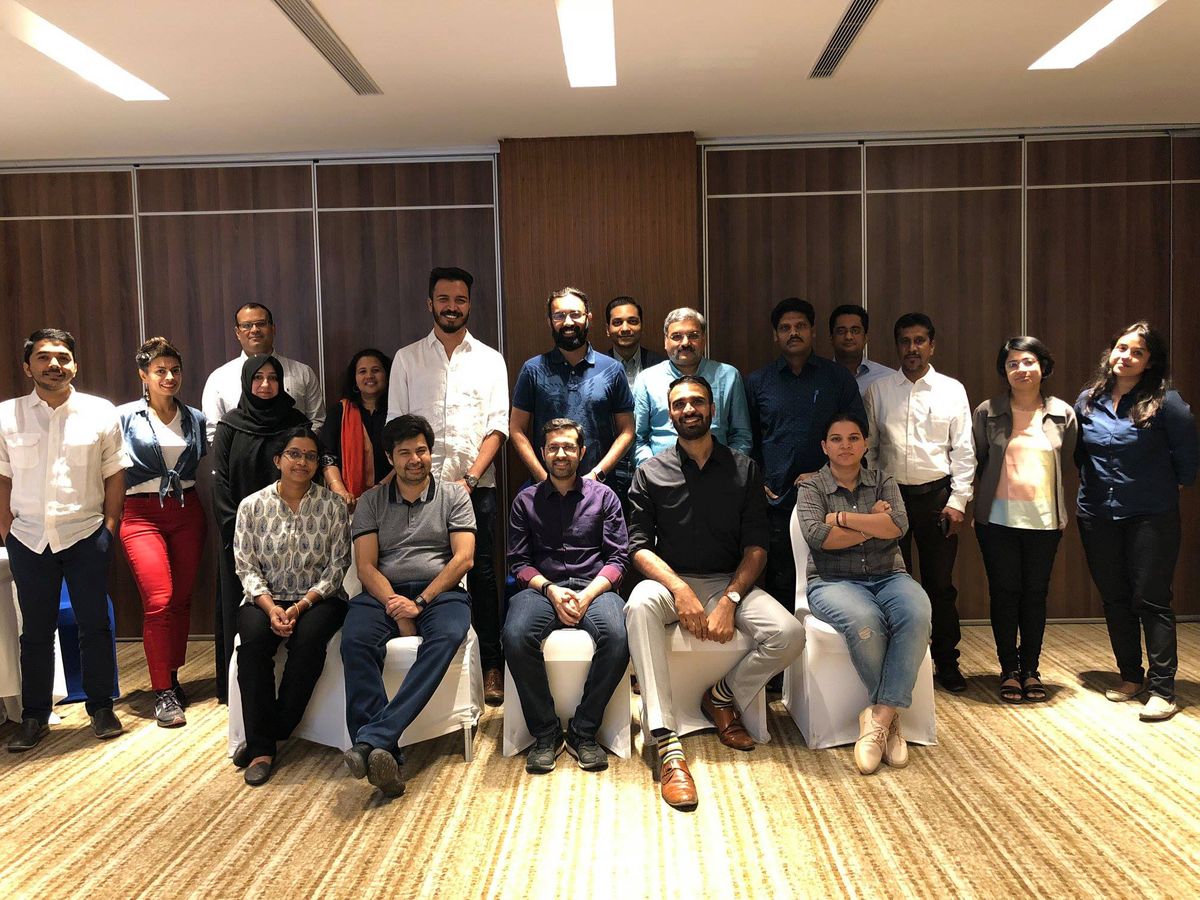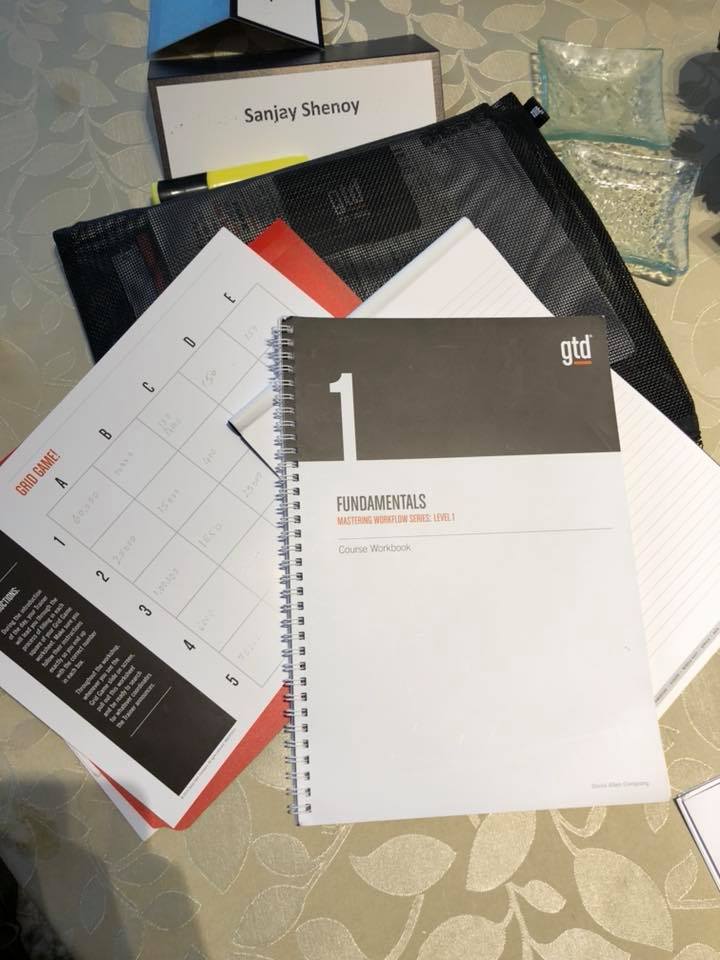Increase Your Productivity with the Getting Things Done (GTD) Methodology

A few weeks back, our team at PixelTrack had an opportunity to attend the Getting Things Done workshop conducted by CalmAchiever in Bangalore. CalmAchiever is the master-franchisee for doing Getting Things Done workshop in India. Getting Things Done is a NY Times bestseller book authored by David Allen.

Since our team’s participation in this workshop, our team’s productivity has gone up and more than paid for the cost of this workshop in terms of increased output. GTD is considered as the most authoritative system on productivity in the world. I had even interviewed David Allen about this methodology a while back.
The workshop was a 2-day weekend workshop held at Hilton, Bangalore. There were around 20 participants from different cities and all walks of life.
We got the amazing opportunity to meet a lot of interesting folks, and learn the GTD methodology. The experience was definitely not the same as reading the book.

If you attend this workshop, you will get a lot more than just the book. You will get an entire GTD kit with charts, workbooks and something called a trigger list. The trigger list will help you remember unfinished tasks from your work and life.
The trainers will handhold you through the entire methodology and will make you follow the process instead of just talking about it. The workshop doesn’t have more than 20-25 participants at a time and hence there is good interaction with the trainers.
The basic idea on which GTD is built is that “Your brain is for generating ideas, not keeping it.” We are good at focusing on one thing at a time.
If we try to remember too many things and rely on our mind to remind us of things, our days will be filled with constant anxiety and frustration. Because if you have tried, the brain does a very poor job at remembering a list. It is a waste of mental bandwidth.
The GTD Methodology has 5 major steps in it. Let me give an overview of the 5 steps.
1. Capture Anything That Comes to Your Mind
If we have a habit of jotting down anything that comes to our mind and relying on a system to remember things for us, our life would be far easier and better. This is the first step of the process. To capture things and write it down. The tool doesn’t matter. Because any online or offline tool would do the job equally well.
As soon as we capture things on a system, our mind will be free of trying to remember that thought. It would relax knowing that the system keeps your thoughts safely and there is no need to consciously remember it. This helps us be more in the present moment, and concentrate better on the task at hand.
2. Clarify What You Have Captured
If we keep capturing things, and if we do not process it, the system becomes unreliable. If you have a to do list with 177 tasks, then your mind won’t relax.
Your brain will know that there are a “lot of things” to be done, and it will go back to square one. It will start thinking about the most important things and your brain will get clogged again.
Each captured thought / idea / to do item needs to go into a category. You first need to categorize it as actionable or non-actionable.
If it is actionable, there are three things you can do about it
- Do it immediately if the task takes less than 2 minutes and remove it from your list
- Defer it for a later date
- Delegate it to someone (may be a PA)
If it is non-actionable, there are again 3 things you can do about it:
- You can trash it, if it is not necessary (we keep capturing things that might not be needed in our life)
- We can file it for future reference
- We can add it to someday – may be list.
Processing the list of things we capture using this process is very important to keep our capture list clean. This doesn’t happen overnight and takes a lot of time to make it a second nature.
3. Organize
Each item needs to go into a separate category. Each category can be a context. For example, in my list I would have things that I have to do at work, and things I have to do at home. If I have a big unorganised list, then it is of no use. But if I organize things like:
- Errands
- To do at Home
- To do at Office
- Calls to Make etc.
Then with such a list, I would be a lot more efficient in doing my tasks at the right contexts. If I am waiting somewhere, I can look at the calls to make list and make a few calls.
At home, I would take the list with tasks to be done at home and then I would just do it. This way I will not forget things. It is almost impossible to go through an unorganized to-do list and try to organize on the go. The efficiency of the entire system would go for a toss if I do not organize things.
4. Reflect
GTD methodology talks about a weekly review system where we look at the list and think about things and our life with a broader focus. For example, I might have a to-do list that says “Make proposal for client X and close the deal”. This is a task for my digital marketing agency. This is a part of my work.
A weekly review of this might make me think – am I doing the right thing by running a digital marketing agency? Is this aligned with my long term life goals? Is this aligned with the growth of my business? Is this aligned to benefit to benefit all stakeholders including vendors, employees, clients and partners? The minimum frequency for reflection is once per week, ideally a weekend.
5. Engage
This might look like a simple and obvious step but the GTD system wouldn’t be complete without this. Getting Things Done methodology is for getting things done, so we better get things done. We need to just do it.
We need to engage in the tasks that require more than 2 minutes of focused attention. We need to mark our times for it, make sure that we follow a routine in our week and actually get things done. One of the most important things I do in my life is write blog posts, and I do deep work through out the week to get blog posts written.
Final Words
As we get more things done in our life, the world will reward us with friendships, satisfaction and of course, Money!
End of the day, what we get is in return for the value we create. And with the GTD methodology, we can create more value in our life, for ourselves, for our friends & family and for our customers.
What’s Next?
If you want to take GTD seriously, you can get the book from Amazon India for as low as Rs.200.


And if you are interested in the workshops being done at various cities across India, you can visit CalmAchiever.com. CalmAchiever also has a blog with interesting articles which you might want to check out.